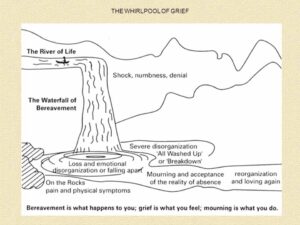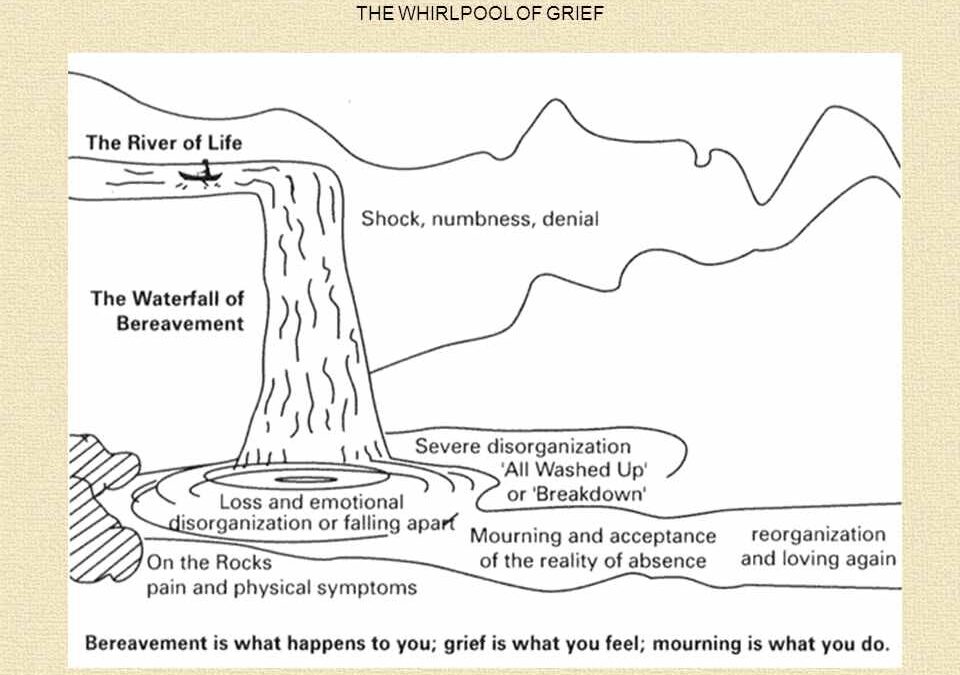When we face the death of a loved one, we go through a whole gamut of emotions, including confusion and fear. This event leaves us unprepared and can be experienced (usually in its initial phases) as a shock or even as a trauma. This is how our bereavement starts. A long and difficult process. Acknowledging how this process occurs, despite being different for each of us, can help us understanding what is happening and eventually move forward. Three terms capture this process:
- bereavement is what happens to you
- grief is what you feel
- mourning is what you do
Bereavement is like a wound and grief is the inflammation that comes from that wound. It causes pain, swelling and disturbance of other functions. This process can last long time, but if we take care of it, sooner or later, it will heal and will become a scar. Mourning is what we do on a practical level during this process. That is why, it is very important to do something, to have rituals that can accompany us throughout this journey, above all in its initial stages. Rituals allow all people who are grieving, to have a role and therefore be involved in the process, as they are approaching to face reality without the deceased.
But how can we deal with this process?

A powerful image describing this process is that of Dr Wilson, which represents grief as a Whirlpool of Grief. Have a look, it can help you understand the stages that usually accompany grief. From the river of life, when one is relatively serene, a shock arrives for the loss of a loved one. This shock throws us in a whirlpool, where we may initially feel numb or in denial. We go down the whirlpool and we experience the most painful ad devastating emotions. Like being in a waterfall. Then, one day, we see a river under the waterfall and, little by little, we learn how to row in it. As we are rowing, gradually, we are also reaching the acceptance stage of our grief towards the adaption to the new reality. We carry on rowing in this river, with the awareness that it is not the same river as before, but this is now the new river of our life.
What can you do while you are crossing the Whirlpool of Grief?
You are already doing something by reading these lines: you are entering into contact with your grief, you are getting information about it. This is already a good sign. Another helpful way is sharing your experience with other people, especially with those that you feel can really understand and listen to you. Every day remember to eat well, to sleep well and to do some physical activity. Then, when you feel ready, go back to your work routine, or any other routine. There will be moments when the pain will be stronger, such as during anniversaries or special days, mark these moments with small rituals. They will make the memory more significant and your grieving experience more real.
Adapted from https://inyourcommunity.org.uk/2017/10/12/coping-with-loss-and-bereavement/
SUGGESTED READINGS
- Collick, E. (1986). Through Grief: Bereavement Journey. London: Darton, Longman & Todd.
- Wilson, J. (2013) Supporting People through Loss and Grief: An Introduction for Counsellors and Other. London and Philadelphia: Jessica Kingsley Publishers.
- Recalcati, M. (2016). Incontrare l’assenza. Il trauma della perdita e la sua soggettivazione. ASMEPA Edizioni.



